#diagnostic labs
Explore tagged Tumblr posts
Text

#Diagnostic labs#North East Delhi#pathology services#Sofia Labs#medical tests#health checkup#blood tests#imaging services#reliable diagnostics#affordable lab tests.
0 notes
Text
https://www.secondmedic.com/blogs/revolutionizing-healthcare-a-glimpse-into-the-diagnostic-labs-of-the-future
0 notes
Text

#submission#baldur’s gate 3#bg3#ghustil stornugoss#bg3 smash or pass#smash or pass#poll#baldurs gate 3#bgiii#baldur's gate 3#baldur's gate iii#I know she’s partially hidden by her diagnostic/lab machinery in this pic#but I wanted to use a more dynamic pic than just her standing there#trying to make it a little interesting#let me know what y’all think
49 notes
·
View notes
Text

ELISA
“An ELISA (enzyme-linked immunosorbent assay) on a half-volume 96-well plate developed with a horseradish peroxidase secondary antibody and the colorimetric substrate TMB (3, 3', 5, 5'-tetramethylbenzidine) which reacts with the HRP to turn blue.” - via Wikimedia Commons
#elisa#wikipedia#wikipedia pictures#wikimedia commons#enzyme linked immunosorbent assay#science#96 well plate#sciencecore#biochemistry#biochemical assay#enzyme immunoassay#molecular diagnostics#molecular biology#immunoassay#wet lab#horseradish peroxidase#medicore#medicine#medicalcore#medcore#medical aesthetic#labcore#laboratory aesthetic#science aesthetic#lab aesthetic#stemcore#stem#stemblr#stem aesthetic#biochemical testing
25 notes
·
View notes
Text
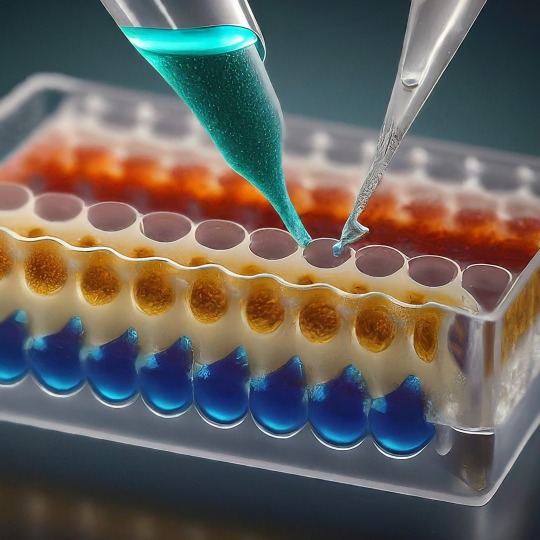
ELISA: A Powerful Tool for Detecting the Invisible
ELISA, or Enzyme-Linked Immunosorbent Assay, has become a cornerstone of medical diagnostics and biological research. This versatile technique allows scientists to detect and quantify minute amounts of target molecules, such as proteins, antibodies, and even viruses, with remarkable accuracy. In this blog, we'll delve into the world of ELISA, exploring its various types, its applications, and the exciting future directions this technology holds.
At its core, ELISA relies on the exquisite specificity of antibodies. Antibodies are highly specialized proteins produced by the immune system in response to foreign invaders. Each antibody can bind to a unique structure, called an antigen, on a specific molecule. In an ELISA, scientists leverage this binding property to create a sensitive detection system.
The 1960s witnessed a surge in interest in immunoassays, techniques that utilize the specificity of antibodies to detect target molecules. One such technique, radioimmunoassay (RIA), developed by Rosalyn Yalow and Solomon Berson, revolutionized medical diagnostics. RIA used radioactively labeled antibodies to detect antigens, offering high sensitivity. However, concerns regarding the safety of radioactive materials fueled the search for a safer alternative. The year 1971 marked a turning point. Independently, Eva Engvall and Peter Perlmann published their work on a novel technique – the enzyme-linked immunosorbent assay (ELISA). ELISA replaced radioactive labels with enzymes, eliminating the safety concerns associated with RIA. Like RIA, ELISA harnessed the specific binding between antibodies and antigens. However, it employed enzymes that could generate a detectable signal, such as a color change, upon interacting with a substrate. This innovation paved the way for a safer and more user-friendly diagnostic tool.
The basic ELISA protocol involves immobilizing the target antigen on a solid surface like a plate well. Then, a sample containing the molecule of interest (e.g., a suspected virus) is introduced. If the target molecule is present, it will bind to the immobilized antigen. Next, an antibody specific to the target molecule, linked to an enzyme, is introduced. This "detection antibody" binds to the target molecule already attached to the antigen. Finally, a substrate specific to the enzyme is added. This antigen-antibody binding is visualized using an enzyme linked to a reporter molecule. When the enzyme encounters its substrate, a detectable signal is produced, such as a color change or luminescence. The intensity of this signal is directly proportional to the amount of antigen present in the sample, allowing for quantification. The beauty of ELISA lies in its adaptability. Several variations exist, each tailored for specific detection needs.
The Four Main ELISA Formats are:
Direct ELISA: Simplicity at its finest. In this format, the antigen is directly coated onto the ELISA plate. A labeled antibody specific to the antigen is then introduced, binding directly to its target. After washing away unbound molecules, the enzyme linked to the antibody generates a signal upon addition of the substrate. Direct ELISA offers a rapid and straightforward approach, but sensitivity can be lower compared to other formats due to the lack of amplification.
Indirect ELISA: Unveiling the Power of Amplification. Similar to the direct ELISA, the antigen is first coated onto the plate. However, instead of a labeled primary antibody, an unlabeled one specific to the antigen is used. This is followed by the introduction of a labeled secondary antibody that recognizes the species (e.g., mouse, rabbit) of the primary antibody. This two-step approach acts as an amplification strategy, significantly enhancing the signal compared to the direct ELISA. However, the presence of an extra incubation step and the potential for cross-reactivity with the secondary antibody add complexity.
Sandwich ELISA: Capturing the Antigen Between Two Antibodies. Here, the capture antibody, specific for one region of the antigen, is pre-coated onto the ELISA plate. The sample containing the antigen is then introduced, allowing it to be "sandwiched" between the capture antibody and a detection antibody specific for a different region of the same antigen. A labeled secondary antibody or a labeled detection antibody itself can then be used to generate the signal. Sandwich ELISA boasts high sensitivity due to the double-antibody recognition and is often the preferred format for quantifying analytes.
Competitive ELISA: A Race for Binding Sites. In this format, the antigen competes with a labeled antigen (usually a known amount) for binding sites on a capture antibody pre-coated onto the plate. The more antigen present in the sample, the less labeled antigen can bind to the capture antibody. Following a washing step, the amount of bound labeled antigen is measured, providing an inverse relationship between the signal and the concentration of antigen in the sample. Competitive ELISA is particularly useful for studying small molecules that may be difficult to directly conjugate to an enzyme.
ELISA's Reach: From Diagnostics to Research. The applications of ELISA are as vast as they are impressive. Let's delve into some key areas where ELISA plays a vital role:
Unveiling the Mysteries of Disease: Diagnostics: ELISA is a cornerstone of diagnosing infectious diseases like HIV, Hepatitis, and Lyme disease. It detects antibodies produced by the body in response to the invading pathogen, providing valuable information for early detection and treatment. Monitoring Autoimmune Diseases: ELISA helps monitor autoimmune diseases like rheumatoid arthritis and lupus by measuring specific antibodies associated with these conditions. Cancer Screening: Certain cancers can be detected by identifying tumor markers, proteins elevated in the blood of cancer patients. ELISA assays are being developed to detect these markers for early cancer screening.
Safeguarding Food Quality: Allergen Detection: Food allergies can be life-threatening. ELISA ensures food safety by enabling the detection of allergens like peanuts, gluten, and milk in food products, protecting consumers with allergies. Monitoring Foodborne Pathogens: ELISA can identify harmful bacteria, viruses, and toxins in food, preventing outbreaks of foodborne illnesses.
Environmental Monitoring: Pollutant Detection: ELISA can detect pollutants like pesticides and herbicides in water and soil samples, contributing to environmental protection efforts. Microbial Analysis: This technique can be used to identify and quantify specific microbes in environmental samples, providing insights into ecosystem health.
Research and Development: ELISA plays a crucial role in various research fields: Drug Discovery: It helps researchers assess the effectiveness of new drugs by measuring drug-target interactions and monitoring drug levels in the body. Vaccine Development: ELISA is instrumental in developing vaccines by evaluating immune responses to vaccine candidates. Basic Research: Scientists use ELISA to study various biological processes by detecting and quantifying specific molecules involved in these processes.
Despite its established role, ELISA is evolving alongside technological advancements. New multiplex platforms allow for the simultaneous detection of various targets in a single sample, boosting efficiency in biomarker discovery and disease analysis. Automation streamlines workflows minimizes errors, and increases throughput, making high-throughput screening feasible in drug development and clinical settings. Miniaturization and portable devices enable rapid on-site diagnostics, providing healthcare professionals with real-time data for quicker interventions. Additionally, ongoing research is improving assay sensitivity, reducing background noise, and expanding detection limits, allowing for the identification of trace analytes and early disease biomarkers with greater accuracy than ever before. Integration of ELISA with emerging technologies such as microfluidics, nanotechnology, and artificial intelligence holds promise for enhancing assay performance, scalability, and data analysis capabilities.
These advancements hold promise for even wider applications of ELISA in the future. ELISA has revolutionized our ability to detect and quantify biological molecules. Its versatility, accuracy, and adaptability make it an invaluable tool across various scientific disciplines. As research continues to refine and innovate ELISA techniques, we can expect even more exciting possibilities to emerge in the years to come. ELISA's future is bright, promising to play a pivotal role in unraveling the mysteries of the biological world and improving human health.
#science sculpt#life science#molecular biology#science#biology#artists on tumblr#ELISA#immunology#immunotherapy#diagnostic management software#diagnosticimaging#history of immunology#scientific advancements#biotechnology#scientific research#scientific equipment#scientific instruments#techniques in biotechnology#scientific illustration#lab equipment#sciencenature#laboratory#lab skills#molecular diagnostics market
10 notes
·
View notes
Text
‘That mask won’t do much to protect you from covid’ you are aware that there are other respiratory diseases, right, and that I now have lung damage post-covid, ergo I’d rather not catch anything else, right
#long covid#masks#health#like ?????#yes sherlock i work in a diagnostic lab with you i am well aware of how droplets work thanks#i too work with the bscs#also i think its good work practice for me cause i dont want lepto either lol#no i havent caught it despite working with it for a year and a half now cause the bsc does its job#but i dont wanna be the person who discovers what respirstory leptospirosis looks like lmao
17 notes
·
View notes
Text
...
#head instructor to the TAs in the lab section i TA for: how r u guys feeling abt the workload?#me who hasnt graded anything since week 1 and spent an hr that morning filling out a patient safety plan: 🙃#listen. we r experiencing symptoms that make us shitty at our job. which is not helpful for a positive outlook#i was also experiencing horrible cramps at the time bc i lost my ibuprofen and 2 days ago i stopped the birth control in a desperate effort#to stop feeling terrible. but in this moment i feel alright. its wild to go from drastically unhappy to like lol wtf was that? anyway stop#being a bby loser. for no obvious reason. im gonna start the birth control again to see if i get depressed again or if that was just me lol#i dont think my therapist understands the depth of my executive functioning issues tho. bc im a grad student and can meet deadlines. like#let me tell u im a fucking disaster abt starting things. i will go back and forth and get nothing done forever. or i do things halfway and#make everything 30 times more difficult later bc no one else understands how my brain works#ah well. itll b fine. sometimes i just get freaked out that i wanna b better and i dont kno how to do that. so i spiral in despair a lil#ill b fine. im good at catching myself before i get too out of control. annoyingly tho i am not currently beating the bip0lar allagations#bc whatever tf is wrong with me i do probably fit the diagnostic criteria for bip0lar 2. i dont kno y that freaks me out so much. i guess#its bc it feels like something i cant just make better thru force of will and i grew up in a home that was very obsessively#health conscious to the point my dad gets anxious abt taking a single ibuprofen. so like ive been conditioned to get freaked out by#medication. literally my grandma will call me and tell me to b suspicious of doctors and to not take medicine unless absolutely necessary.#like lady u r the genetic reason i have 0cd shut the fuck up. also it feels like something that would more negatively affect how ppl think#of u than saying oh yea i get depressed or i have anxiety. like the connotation feels worse im used to just telling ppl whatever tf#my problem is. so the idea of holding something back feels weird. which annoys me bc i dont think there should b so much of a stigma. its#bullshit. anyway idk. im tired. i was trying to think of a comfort tv show with my therapist and all i could think was the terror#when im depressed i wanna watch those English mother fuckers suffer and die. i just lov that show so much. harry g00dsir my beloved. the#most me coded character to ever exist#unrelated
8 notes
·
View notes
Text

4 notes
·
View notes
Text
just tipsily spent an hour on hinge and watching old nct dream content on a saturday night. and this is supposed to be the prime of my life..... tch..............
#it's bit too late to go out out but all my friends are either homebodies or out of townnnnnn :( and i don't want to do my homework :(#at least i finished my new patient intake forms for my diagnostic appointment but it's not for another 2 months :(#whatever if no one's got me i know rooftop fight and dream mystery lab have got me 👆#i watched these when they came out i cannot fucking believe it's been 3 years............#whatever i think i'm going to make an egg salad sandwich and feel better (<- whitest thing i've ever said)#a post
4 notes
·
View notes
Text
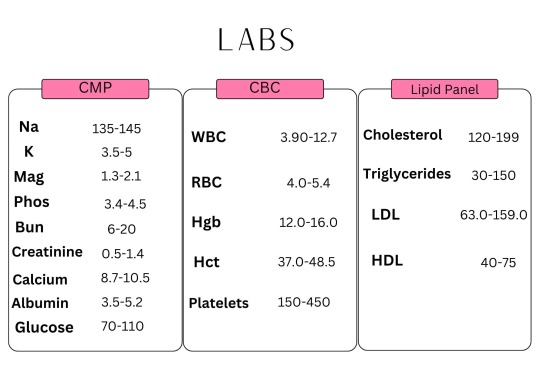
#icunurse#nursing school#nursing#etsy#icucare#hospital#icu#health and wellness#healthcare#diagnosis#diagnostic management software#medblr#patientcare#patientsafety#medical care#bloodwork#labs#note cards#reference#nursing studyblr#nursing student
5 notes
·
View notes
Photo
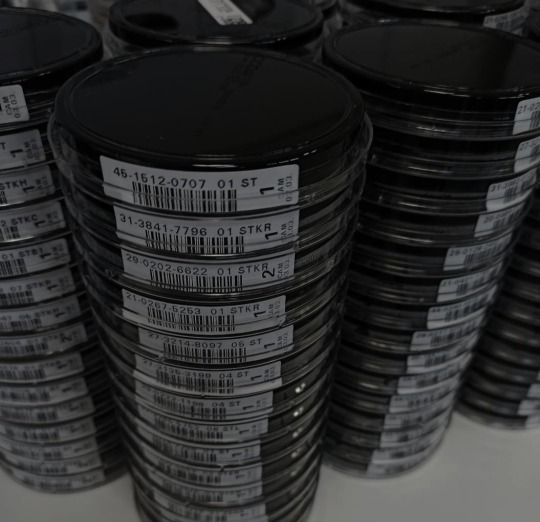
local lab rat
#bacteriology#lab#laboratory#campylobacter#candida#ccda#yeast#fungus#microbiology#microbes#technical assistance#diagnostic#medic#ecoli#black and white#clinical#microbiome#pathogen
7 notes
·
View notes
Text
VICTORY FOR THE ME COMMUNITY
#i’m officially going to be working on this study at my university. i’ll be doing fecal floats and pcrs and potential necropsies and stuff#i’m so excited#and then i’m going to be able to intern at the necropsy diagnostic service as well#they’re just a little hectic rn so i can’t start over there at the moment#i’m so so excited#my professor said he’s had student workers who’ve been wheelchair users and the labs have been pretty accessible for that. the main thing i#that i need to be able to have my hands free#but holy shit. im just. !!!!!!!!!!!!!#caps tw#it’s also like. not gonna name the place i’m gonna be working bc the location could be googled but. the name of the place on my resume coul#do wonders like even if they don’t pay me that experience is gonna be fantastic#my post
3 notes
·
View notes
Text
Blood Test Near Me In Thane | ViLife Diagnostics
We believes in the ideology of quality, precision, timeliness. So you can find us easily by searching Blood Test Near Me In Thane
#Blood Test Centre In Thane#Blood Test Near Me In Thane#Blood Test Diagnostic Centre#Best Blood Test Near Me#Best Blood Test Lab In Thane
2 notes
·
View notes
Text
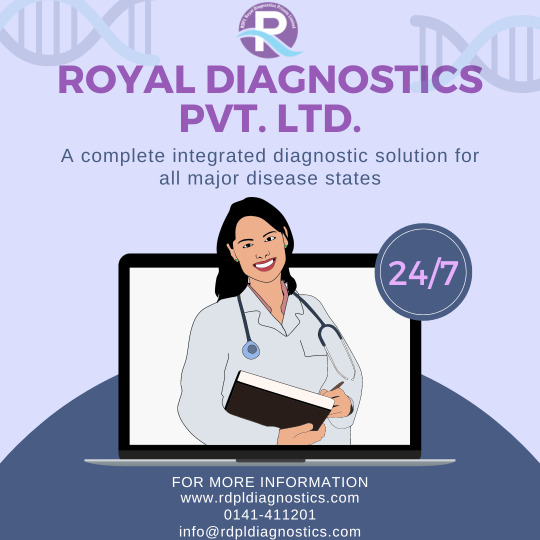
#diagnostic laboratory near me#best pathology lab near me#best diagnostic centre#diagnostic clinic near me#near by diagnostic centre#Master Body Checkup#Food Allergy test#Full Body Checkup#Diagnostic centers in jaipur#path laboratory near me#high esr symptoms#pus cells in urine#lipid profile test price#price of lipid profile test#blood test near me#royal diagnostic centre online reports#Royal Diagnostic Centre Jaipur Contact Number#royal lab
3 notes
·
View notes
Note
Also, are you better? How are doing?
besides the Got Fired thing, pretty aight! i get to take my heart monitor off this thursdaayyyyyyy!!!!! but i wont know if anythings up for another week :(
#also hashtag diagnostic lab give me my very important blood test results challenge (FAILED) (NOT CLICKBAIT)#wasks
4 notes
·
View notes
Text
I just want to say that like the original post is also incorrect. for adhd the most highly diagnosed population is black boys. they are disproportionately diagnosed with adhd because white teachers are more likely to perceive their behavior as abnormal or extreme and thus recommend them for testing/diagnosis. black teachers rated the behavior of black students as the least abnormal, with white teachers rating the behavior as abnormal more frequently, and white teachers with racial prejudice the most frequently.
ODD should not be a real diagnosis, it’s a the best symptoms of other disorders manifesting themselves through ‘cranky attitude’ (< actual diagnostic criteria) and it very well may be overrepresented in black children, I don’t actually know since that’s not my area, but black children, especially black boys, are definitely over diagnosed with adhd.
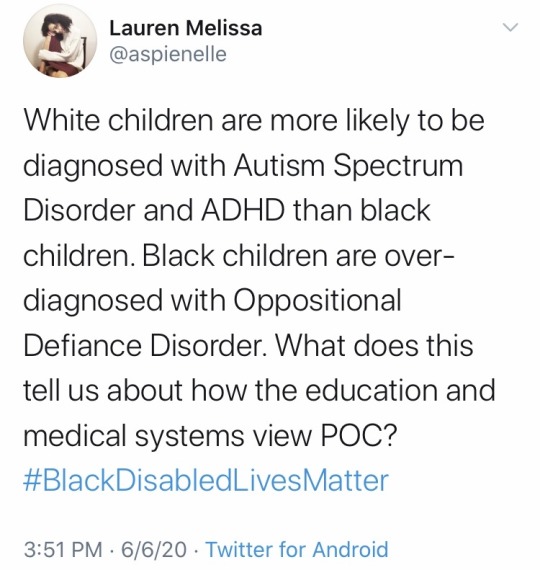
#I’m sorry I don’t have sources but if you look up studies about diagnostic disparities in adhd this is what you will find#I did work in this area for my undergrad capstone as well as 3 research labs and#my psychological measurement class
110K notes
·
View notes